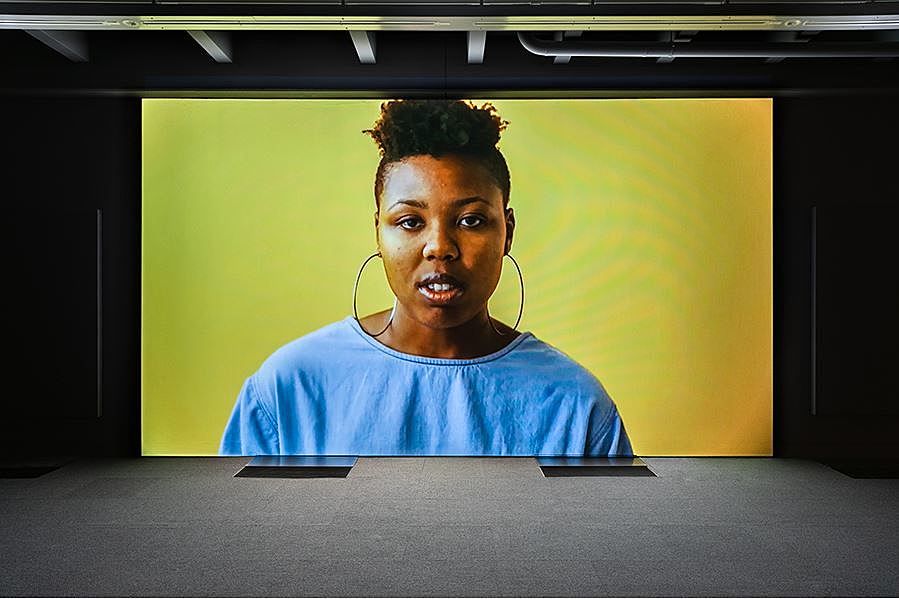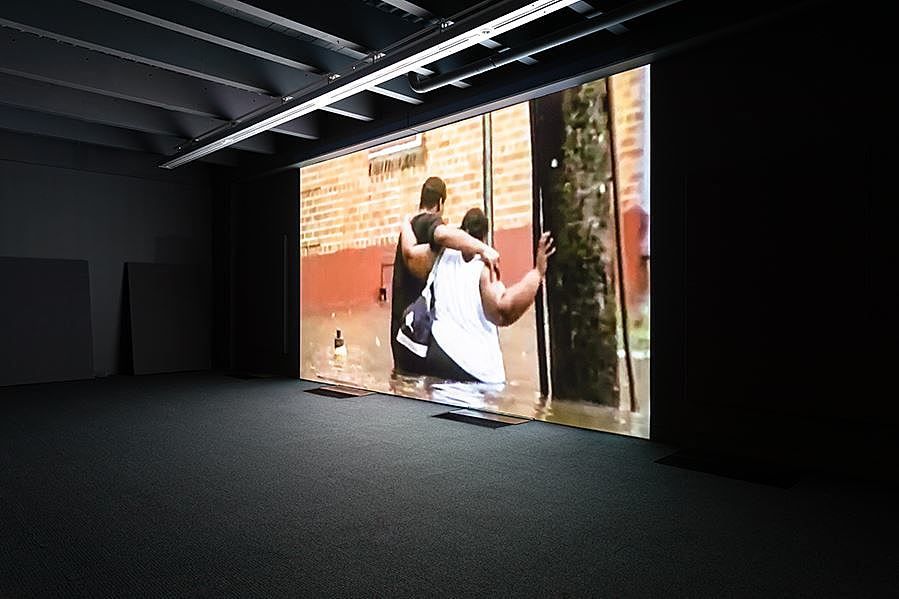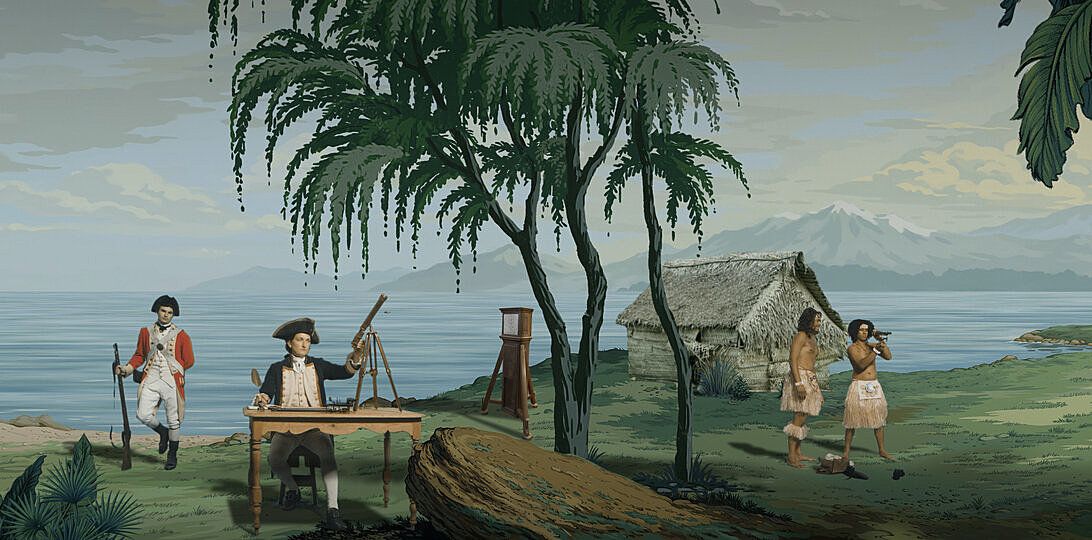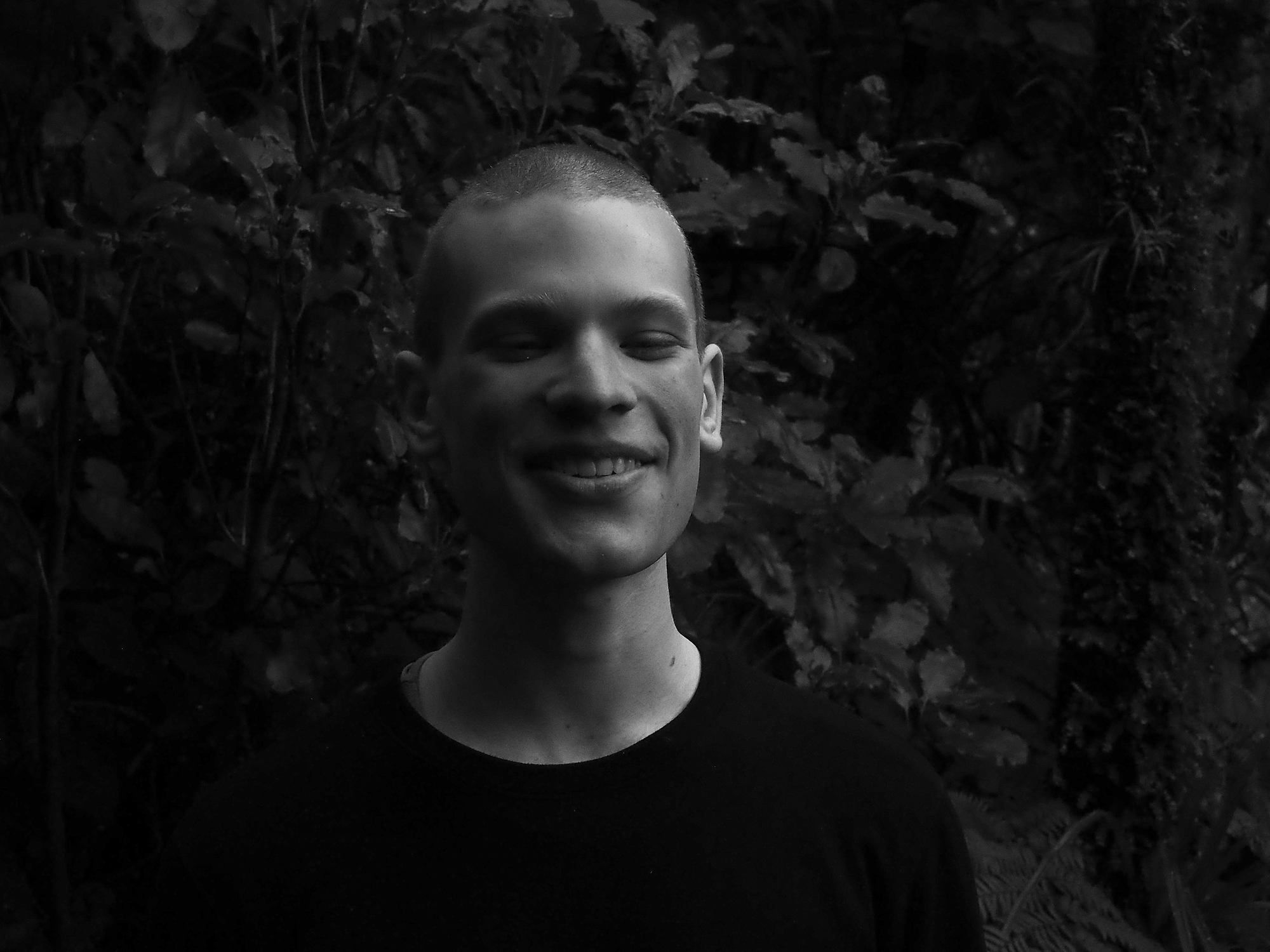History is Not a Dead Thing
Amit Noy on whiteness, choreography, and the archive in Arthur Jafa’s Love is the Message, the Message is Death and Lisa Reihana’s in Pursuit of Venus [infected].
At times, looking at art can feel like discovering a newly beloved vegetable. Your nostrils flare, your pores expand, and your chest softens with the recognition of an instant, lifelong kinship. Then imagine this legume arriving wildly at your intestines and rupturing your gut’s floodgates with the seismic force of a (gastrointestinal) earthquake. Laughing nervously, you break out into a run and a sweat at the same time.
Sometimes art lands inside you as both the first taste and the run. That’s the feeling I had with both Arthur Jafa’s 2016 video Love is the Message, the Message is Death and Lisa Reihana’s 2015–2017 video installation in Pursuit of Venus [infected], shown at Te Pātaka Toi and Te Papa Tongarewa, respectively. I encountered both artworks on the same hot Tuesday in Te Whanganui-a-Tara, and now I can’t think of one without also being haunted by the other. They sit with me like the action potential between two firing neurons.
Both centre moving bodies to expose the same rotten presumption: history as a carcass
If Love is the Message, the Message is Death lands with the messianic finality of a missile, then in Pursuit of Venus [infected] is a methodical injection from a syringe. They might hit you with a different force, but both centre moving bodies to expose the same rotten presumption: history as a carcass, stale with irrelevance. Reihana and Jafa remind us that history is not a dead thing. In fact, its irreducible continuity precludes the possibility of a death. Matter, always involved in a simultaneous de/re-composing, does not recognise our conceptual imposition of an ending. You can find the so-called ‘past’ in your plastic charging cable, or the loose flap of skin that hangs off your straightened elbow.
(Of course, I am speaking here of a White mistake. Many Indigenous worldviews, Māori among them, have much more expansive conceptions of time.)
Arthur Jafa, Love is the Message, The Message is Death, 2016, digital video projection, 7:25 mins, colour/sound, courtesy of the artist and Gladstone Gallery. Installation view of Image Processors: Artists in the Medium – A Short History 1968–2020, Te Pātaka Toi Adam Art Gallery, Te Herenga Waka—Victoria University of Wellington, 2021. Photo by Ted Whitaker
MICROWAVE EPIPHANIES
Arthur Jafa’s Love is the Message, the Message is Death burns through seven incendiary minutes. (There are literally images of a flaming sun interspersed throughout.) It’s like when you press all the buttons on the remote at once, except the channels are all Black with agony and ecstasy. To the sound of Kanye West’s 2016 song ‘Ultralight Beam’, Jafa releases a torrent of videos of Black people culled from all corners of the internet. Each clip lasts only seconds. There’s sweaty grinding at the club, spins and dips at a Vogue Ballroom, and Obama singing ‘Amazing Grace’. There’s a mother and son ordered out of their car at gunpoint, a running policeman who leaps and bulldozes a Black teenager, and a grainy video of a Black toddler crying and looking backwards, hands flat against the wall. “That’s what the po-lice do to you!”says his father, or maybe his older brother.
Over and over, you see the Black body under duress – breaking down from too much aliveness or the incipient promise of death. Love is the Message, the Message is Death runs your emotions under a truck. Your relationship to it might be drastically different depending on the colour of your skin, but no one is spared. Jafa has said that he made the video "in the face of what seemed like a tsunami of footage of Black people getting killed”. Yet what does this overload of senselessness do, and who has most easily absorbed it?
“I started to feel like I was giving people this sort of microwave epiphany about blackness and I started [feeling] very suspect about it. After so many, ‘I cried. I crieds’, well, is that the measure of having processed it in a constructive way? I’m not sure it is.”
“I started to feel like I was giving people this sort of microwave epiphany about blackness and I started [feeling] very suspect about it"
Since the murder of George Floyd, I have registered in myself and other White folks around me a tendency to regard crying as a form of activism. At the time I noticed that my White friends on social media consistently shared the most brutal footage of racial violence, to raise (an admittedly much-needed) ‘awareness'. All these microwave epiphanies still render the Black body as an instrument for us to weep to, or access an anger that disregards our own complicity. In the face of its own horrific destructiveness, Whiteness co-opts the empathic response as an opportunity to cruise straight to the juicy thrill of repentance. This empathy is tautological insofar as its primary goal is simply to exist. Even as catastrophe knocks on its doorstep, Whiteness finds a way to remain in the still waters of its supremacy.
So we return to moving and the kinetics of a message, with a Jort-clad ass bouncing in slow motion. Love is the Message, the Message is Death closes with a video of James Brown falling to his knees as he tears up the last notes of a song. On falling, Fred Moten says, “first … there is a social erotics of the lost and found in fallenness’s refusal of standing. We fall so we can fall again, which is what ascension really means to us. To fall is to lose one’s place, lose the place that makes one, and relinquish the locus of being, which is to say of being single. This radical homelessness … is the essence of Blackness. This refusal to take [a] place is given in what it is to occur.”
Lisa Reihana, in Pursuit of Venus [infected], 2015–2017
PARADISE, BEFORE THE SOURING
As I watch in Pursuit of Venus [infected], the past crawls over my shoulder and sits in my lap. Created by Reihana, and hundreds of collaborators from all parts of the world, in Pursuit of Venus [infected] is a cinematic ta(l)king back to Joseph Dufour and Jean-Gabriel Charvet’s neoclassical wallpaper Les Sauvages de la Mer Pacifique, which held Europe in arrested fascination at the turn of the 19th century. The video deploys Dufour and Chauvet’s infantilising rendering of a utopian Moana paradise, and yet infects it with many imagined first encounters between European explorers and the Indigenous people of the Pacific. The scenes unfold across a slow pan with breathtaking complexity.
The pale blue ocean is the texture of condensed milk. As I watch its creamy ululations, the same cloying sweetness fills my mouth. The twee vegetation seems straight out of Disney’s Moana, or the packaging of a plastic water bottle you might buy in an ABC store in Honolulu. The ground shows no signs of blemishes or smears, and when I look upwards, I notice even the cumulonimbus are fluffy with dread.
This is paradise, before the souring. It is when the katipō bites – before the swelling, the sickness, and the crying. Yet the tears are already here, in the form of strangers with crying skin (some call this sweat).
This is paradise, before the souring. It is when the katipō bites – before the swelling, the sickness, and the crying
A White man whips another White man. Other White men stand close; they watch without watching. Squatting, a Brown woman holds a crying child. Both their faces are obscured. White men breathe with gassy pomposity as they peer at the sky. A Brown girl promenades at the request of her elders, holding a White man rapt. He is stupefied with desire. In the foreground, an Indigenous woman performs a hula noho.Her gestures tell the story of the many grains of sand. An ensemble of life-sounds floods each minute, of which there are 64. I remember yelling amidst birdsong, a ship’s horn, the crack of the whip, taonga pūoro, the chanting of hula kahiko, and the waves breaking softly on the shore. In amongst all these melodies, shrieks and grunts is the walking bass-beat of this chorus of colonisation.
In pursuit of Venus [infected] is a staggering treatise on the stickiness of difference. It charts Whiteness’ logistics of dominion – how it “mov[es] property through the emptiness, making the world as it travels by filling it”. Yet the island is also populated with many Indigenous peoples practising dances and rituals as an affirmation of whakapapa and tino rangatiratanga. This juxtaposition might seem one dimensional, but Reihana’s brilliance is to stage their cohabitation as messy entanglement.
I gaze from left to right and take in a dozen scenes all at once. Each brings forth a different mode of relation, etched in the touch of one body to another. Yes, this is visual art, but it is also theatre and choreography, if we accept Merce Cunningham when he says that dance is “the visible action of life”. It is through Reihana’s choreographies that we understand the encounter’s profound failure. The sea of clenched fists, immobilised by fear and dumb incomprehension, is all you need to know.
Feature image: Arthur Jafa, Love is the Message, The Message is Death , 2016, digital video projection, 7:25 mins, colour/sound, courtesy of the artist and Gladstone Gallery. Installation view of Image Processors: Artists in the Medium – A Short History 1968–2020, Te Pātaka Toi Adam Art Gallery, Te Herenga Waka—Victoria University of Wellington, 2021. Photo by Ted Whitaker



